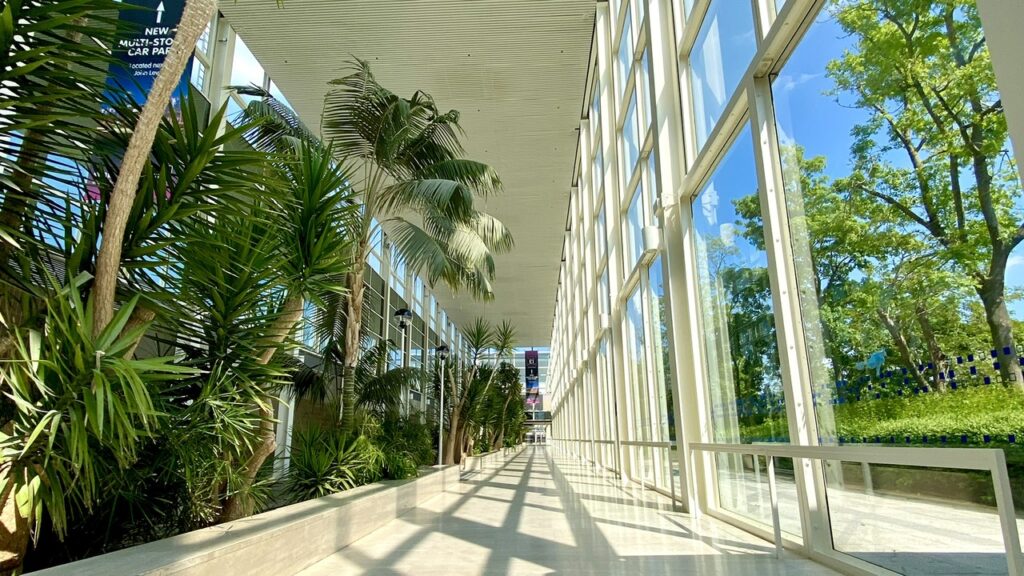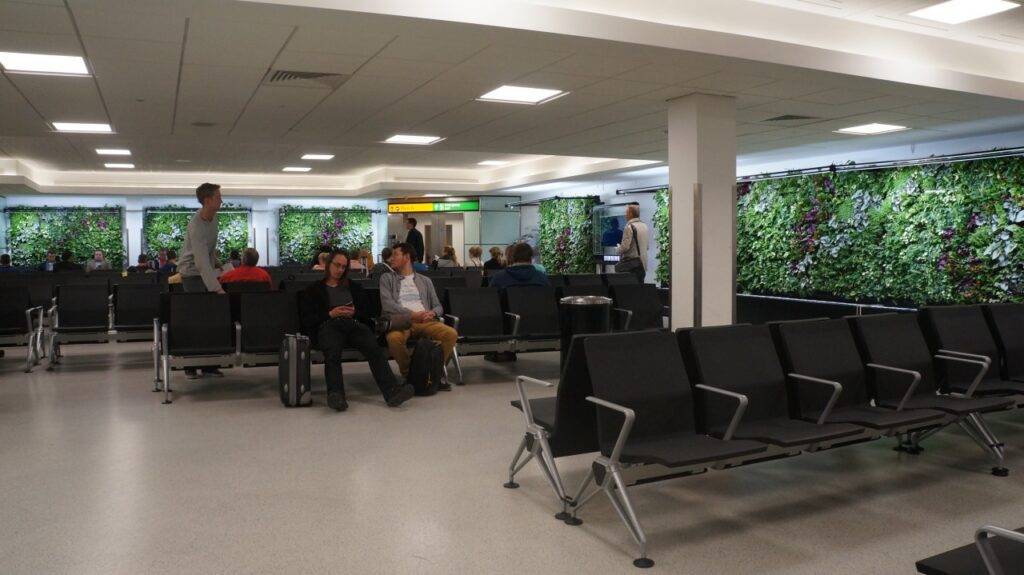Can a cup of coffee boost your businesses health, well-being and profitability?
The pandemic has made many of us more aware of our surroundings and in particular how nature can help with our metal health and wellbeing. Introducing natural elements into our homes and works spaces can have a huge impact on us as this blog from Sean Clegg of Tiny Jungle explains
You’ve just arrived at work (in my case walked down the stairs – Thanks C-19), what is the first priority for the beginning of your day?
Hazard a guess, you’re heading straight to the coffee, am I right? I would be around 65% successful in my assumption. I’m personally a tea-fiend.
So, you have your precious caffeine hit and you happily set off to work.
Now imagine, that as a business the decision has been made to remove our favourite hot drink from the work offering. We are connoisseurs and the coffee stacks up at £3 a cup, which financially saves us making one employee redundant.
What happens next? Uproar, dissent, mutiny, riot!
No coffee results in lost productivity, reduced engagement, diminished moral, increased absenteeism and possibly increases in staff turnover. All of this seems a bit extreme, but in reality people have certain basic requirements that allow them to function effectively at work. We have accepted standards of basic features for every workplace. Correct tools, safe working practices, operating procedures and even remuneration standards that we implement without question. Sometimes at great cost to the business. Costs that don’t always provide the returns on the investments.
Workplace health & well-being is the flavour of the week and has been for quite some time only being forced up the priority list thanks to the global pandemic.
Typically a UK business might invest £50-£100 per employee per year on a traditional wellness programme, allowing staff to enjoy private medical care, gym memberships and retail discounts. These programmes tend to see a 30% uptake. That is a lot of wasted capital, I hear you thinking. How can we get people to participate in health and wellness to make the programmes worthwhile?
Simply put: You can’t really do anything because the participation is choice based. We can however take another approach! A more (or less) conventional route. Current surveys and the conversations I have daily has really highlighted something that Covid-19 has given everyone a crash course in:
The environment in which we work is critical to our success.
Our desks, the space to work, all of the correct equipment we need all in our offices the places that seem like a luxury as we squish into the little space in our homes that is not consumed by life.
A luxury that a year ago nearly half of us hated! Weird isn’t it?
Why? More often than not, the physical environment (habitat) that we live and work in is missing something really important.
Nature.
As an advanced species we have alienated ourselves from the habitat that supports us and although we are adaptable we are still animals.
Science has shown that without nature and natural surroundings we suffer mentally and physically. This translates into business too.
Biophilic design can be used to solve some of these woes.
Bio-what’s-that?
Biophilic design is a term used to describe interior and exterior design that uses nature and natural features in a human space.
The application of biophilic design has been implemented in local projects that you’ve probably experienced but never really noticed. Let’s have a look at a couple and talk about the benefits that have been reported.
Centre:MK –

Centre:MK – Blurring the divide between indoors and outThis shopping destination has been around for decades with its towering glass walls and internal plantings. Compared with traditional strip malls, Centre:MK feels bright, airy and open. The structure blurs the lines between the greenery outside with the plantings inside.
They have also recently invested in a living wall and live plantings in the INTU multi-storey car park as well as installing comfortable seating areas featuring wood grain furniture and hexagonal sound attenuating lighting fixtures throughout the shopping centre.
These elements have increased dwell time substantially and have improved the customer experience by reducing the harsh sterility of the space as well as trapping air pollutants from vehicles using the parking structure.
Business benefit – Increased customer spend and return custom, reduction in environmental impact, enhanced aesthetics.
Heathrow Airport, Terminal 3, Gate 25 –

Heathrow Airport, Terminal 3, Gate 25 – The Green Gate
During a customer satisfaction survey, gate 25 earned the honour of a wooden spoon for lowest satisfaction (47%).
The subsequent installation of living walls with over 1500 plants is now normal {thanks again C-19), enjoyed by over a quarter of a million passengers each year boosting the satisfaction ratings by 25%.
Business Benefit – Relaxed people, reduced noise, cleaner air and more stable temperature and humidity levels in the gate’s waiting area.
The proverbial fish tank in the dentist waiting room –

Aquarium in the dentist’s waiting room – image by aquaticdesign.co.uk
This is something that was very trendy a few years ago but seems to have fallen to the wayside a little recently.
Nevertheless, it’s a good example worth talking about. Exposure to water features and fish tanks has proven to reduce stress and anxiety levels rapidly. Studies have shown as much as a 15% decrease in heart rate within 10 minutes of exposure. Respiratory resilience is also supported by the stabilised humidity levels created by the evaporation from these features.
The benefits highlighted here do not only apply to retail or customer experiences. They apply to all human experiences. They are not exclusively large scale high cost projects either. Biophilic design is scalable, it can be modular or phased and even seasonal.
Investing in biophilic design in a space also solves that annoying question we raised earlier;
How do we ensure 100% uptake on our wellness spend?
We do it by creating the compulsory wellness by creating a healthy natural environment that benefits you just by being there.
So while we finish our cups of coffee, think about that £3 a cup.
If you could invest a cup of coffee per employee per week into a project that might boost profits enough to keep that supply of great coffee & not need to reduce headcount, would you do it?
I know what my answer is.
If you’d like to find out more about biophilic design and how I can help you to improve your business, get in touch! I would love to have a conversation with you.
 Sean Clegg of Tiny Jungle helps you to thrive naturally by introducing nature and naturally inspired elements into your work and living space. Sean is a nature artist, a biophilic designer and natural innovator interested in merging nature and technology. Tiny Jungle strives to improve health, well being, engagement and profitability with biophilic design, a concept used within the building industry to increase connectivity to the natural environment through the use of direct nature, indirect nature, and space and place conditions. Creator of natural statement pieces, moss walls, living walls, planted aquariums and vivariums.
Sean Clegg of Tiny Jungle helps you to thrive naturally by introducing nature and naturally inspired elements into your work and living space. Sean is a nature artist, a biophilic designer and natural innovator interested in merging nature and technology. Tiny Jungle strives to improve health, well being, engagement and profitability with biophilic design, a concept used within the building industry to increase connectivity to the natural environment through the use of direct nature, indirect nature, and space and place conditions. Creator of natural statement pieces, moss walls, living walls, planted aquariums and vivariums.
To find out more go to Tiny Jungle






